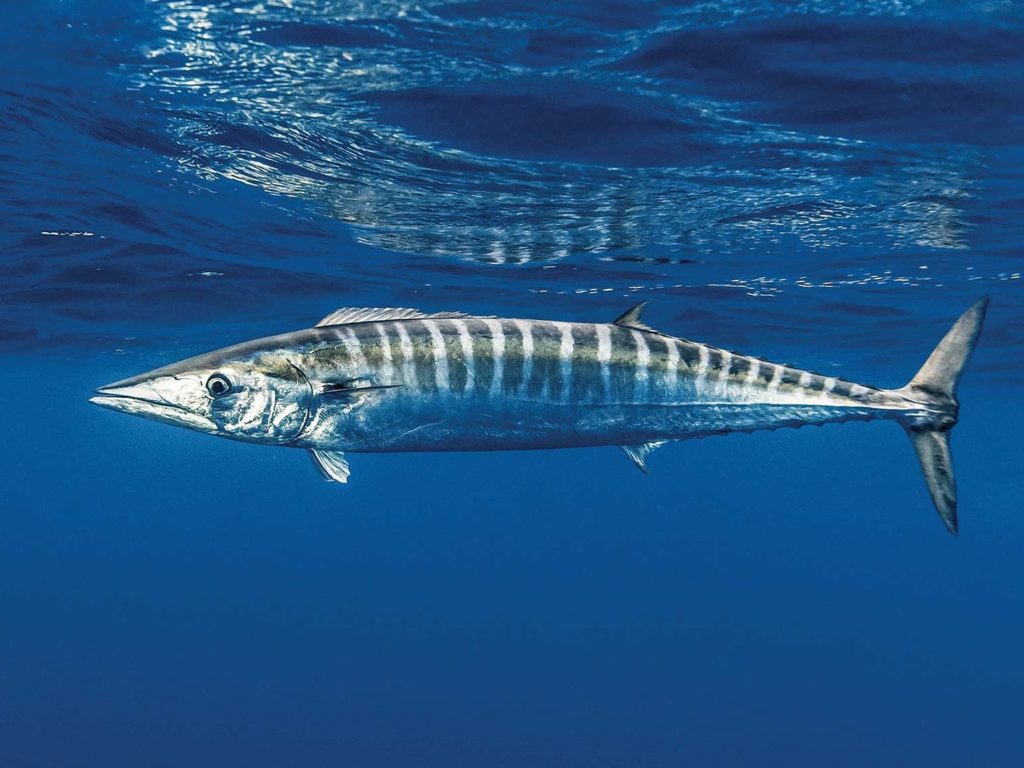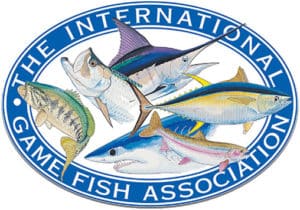Contact us if your target is Wahoo in Costa Rica
See our Wahoo Photo Gallery

Wahoo
In the North Pacific coast it can be found every month of the year, especially from November to March. In the Central Pacific coast it is especially good from September to November.
The Wahoo is a species of Spanish mackerel in the Scombridae family. Other members of the family include tuna, bonito, mackerel, and more. Researchers place this species in the Scomberomorini tribe, along with the other Spanish mackerels.
People prize this well-known species as a sport fish for its speed and powerful swimming
Wahoo, also known as Ono, is a highly sought-after game fish in Costa Rica. They are known for their high speed and powerful runs, making them a popular target for sportfishers. They can be found in the open ocean and along the coast, and are typically caught by trolling with lures or live bait.
Wahoo are usually caught in the Pacific waters of Costa Rica, and are most commonly found in the waters around the Osa Peninsula and the Nicoya Peninsula. They can also be found around the famous Catalinas Islands and the Bat Islands, as well as around the many offshore fishing grounds in the Gulf of Papagayo.
The best time to catch wahoo in Costa Rica is from December to April, when the water temperatures are warmer and the fish are more active. However, they can be caught year-round with the right conditions.
When fishing for wahoo, it’s important to use the right tackle and techniques. They are known to be powerful fighters and can easily break light lines, so it’s important to use heavy tackle, such as a 80-100 lb test line. Trolling is a common technique used to catch wahoo, and anglers typically use a combination of lures and live bait to attract the fish.
In terms of responsible fishing, Costa Rica’s government has established a number of regulations to protect wahoo and other marine species. For example, catch-and-release is the norm for wahoo, and the use of circle hooks is mandatory to minimize damage to the fish. Additionally, NGOs such as MarViva, which promotes responsible fishing practices, work to ensure that these regulations are enforced and that the local fishing communities are educated about sustainable fishing practices.
Description of the Wahoo
This fish has silvery colored scales with a dark, blue-green colored back. Its sides, or flanks, have light blue stripes or barring. People often mistake this species for a barracuda for this reason. Adults typically reach about five or six feet long, but exceptionally large individuals can surpass eight feet in length.
Interesting Facts About the Wahoo
People often target this species as a game fish. Learn more about what makes them unique, below.
- Hawaiian Cuisine – People in Hawaii call this species of fish “ono.” The word roughly translates to “good to eat.”
- What’s in a Name – Ironically enough, the common name of this species also came from the Hawaiian Islands. When Europeans first encountered the islands of Hawaii, they often misspelled Oahu as “Wahoo.” This misunderstanding led to the European term for this species.
- Recreational Fishing – Many people target this species as a sport or game fish. They enjoy catching this fish because it reaches relatively large sizes, and poses some difficulty to reel in because of its powerful swimming.
Habitat of the Wahoo
You can find this species both close to shore and in the open ocean. It inhabits epipelagic ecosystems, or the area from the surface of the water to as deep as light continues to penetrate. This species ranges as far as 1,000 feet beneath the surface.
Distribution of the Wahoo
These fish range throughout tropical and subtropical seas, and also live in some temperate zones as well. You can find them across the central Pacific Ocean from the Indo-Pacific region to the Americas. On the west coast of North America, they range from southern California, through Mexico, to Central and northern South America.
Diet of the Wahoo
These fish have powerful and capable hunting abilities. They swim in active pursuit of prey, and have carnivorous feeding habits. Some common prey items include squid, flying fish, halfbeak, gurnard, and more. Their diet varies based on where they live and how large they are.



